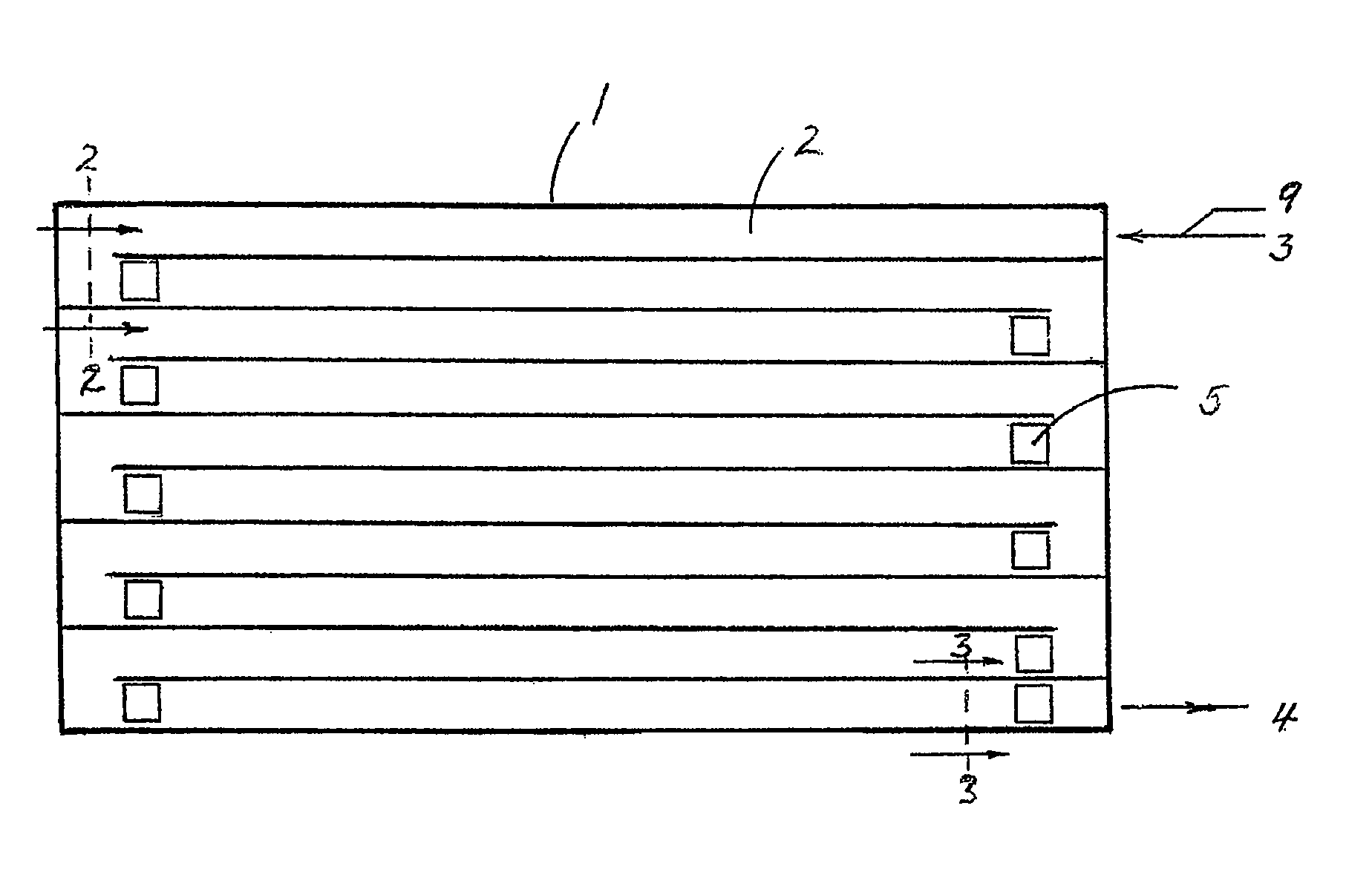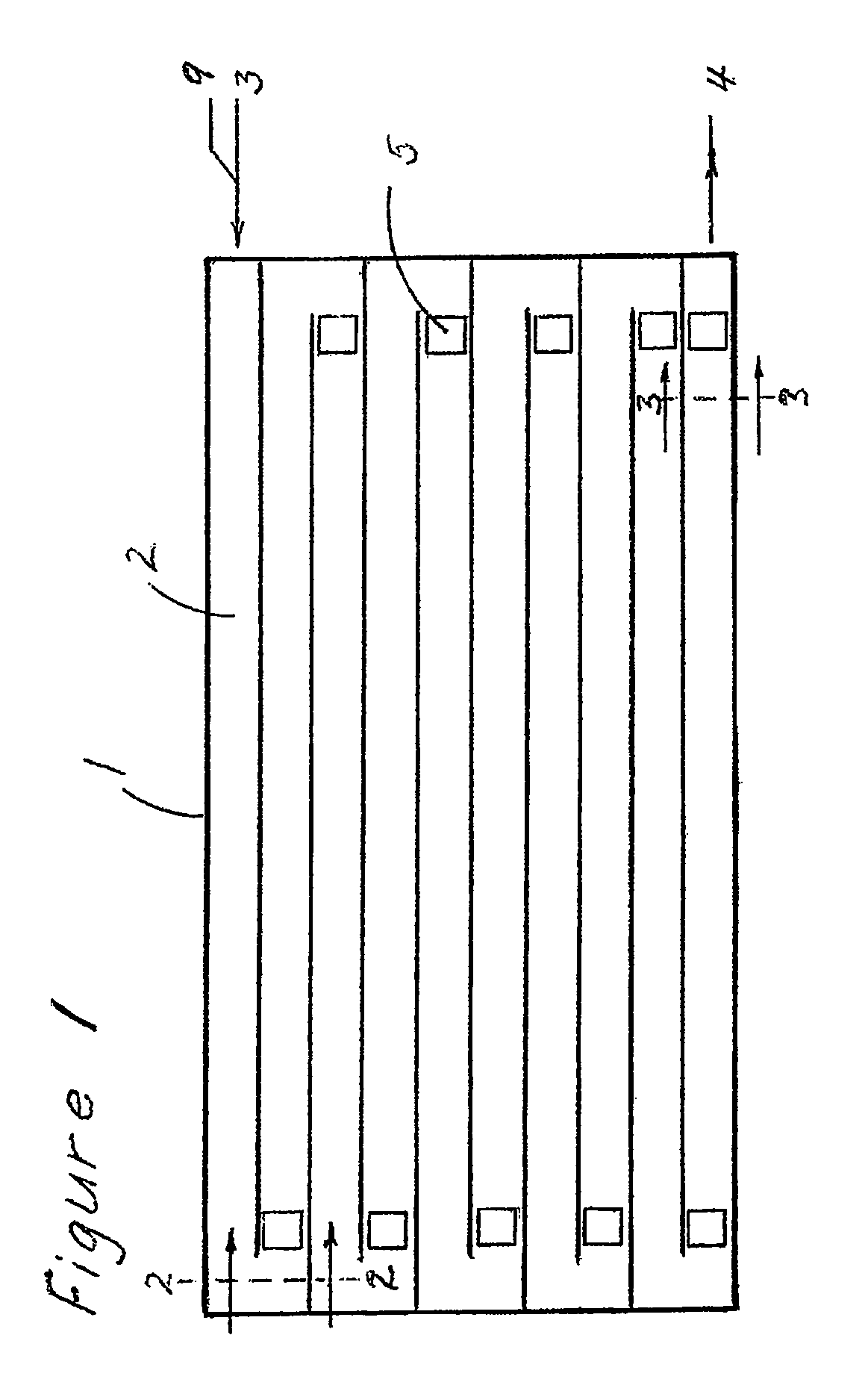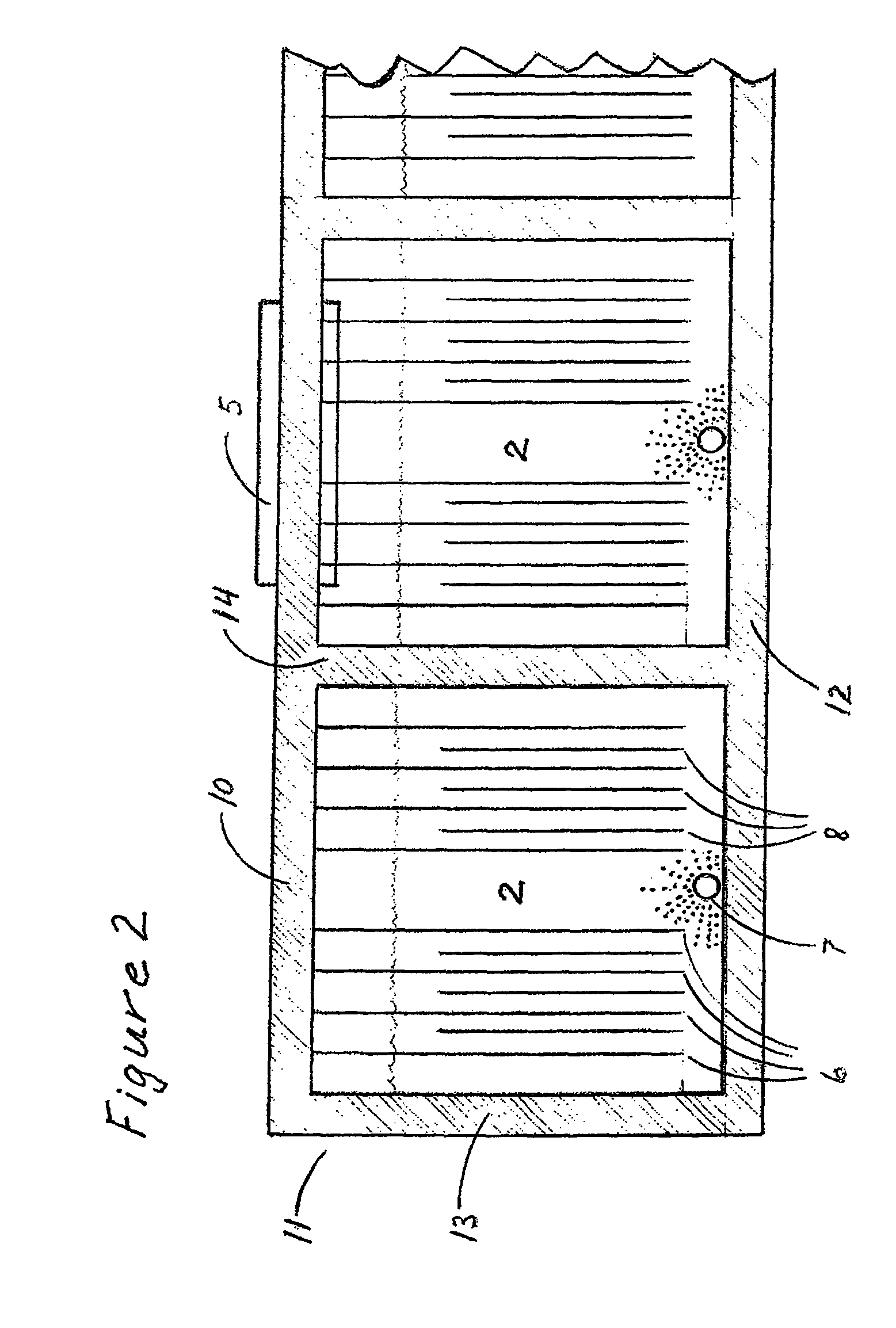Enhanced photosynthesis and photocatalysis water treatment/biomass growth process
a photosynthesis and photocatalysis technology, applied in the direction of biological water/sewage treatment, biomass after-treatment, microorganisms, etc., can solve the problems of unsuitable gases for use in microalgae growth processes, inability to achieve potable water purity, and high cost to reach clean water quality, etc., to achieve sufficient treatment time, reduce disinfection costs, and optimize nutrients
- Summary
- Abstract
- Description
- Claims
- Application Information
AI Technical Summary
Benefits of technology
Problems solved by technology
Method used
Image
Examples
Embodiment Construction
[0022]To practically employ the process of this invention, an entire waterflow is treated in a closed environment to effect the absorption of all originally contained nutrients (along with supplemental nutrients that are supplied when deficient), and dissolution and mineralization of all organic and inorganic chemical compounds is concurrently accomplished. The range of wastewaters that may be treated covers complex secondary activated municipal sewage laden with nutrients and pollutants at one extreme, and at the other extreme, ocean saltwater containing about 3.5% mineral salts but which is otherwise of relatively good purity, as well as brackish water. To accomplish such objectives, this invention provides a very flexible and adaptable system wherein a treatment process can function effectively in the presence of a wide range of aerobic, anaerobic and autotrophic micro-organisms including problematic bacteria and viruses.
[0023]This invention effectively purifies virtually all typ...
PUM
| Property | Measurement | Unit |
|---|---|---|
| total length | aaaaa | aaaaa |
| velocity | aaaaa | aaaaa |
| dry weight | aaaaa | aaaaa |
Abstract
Description
Claims
Application Information
 Login to View More
Login to View More - R&D
- Intellectual Property
- Life Sciences
- Materials
- Tech Scout
- Unparalleled Data Quality
- Higher Quality Content
- 60% Fewer Hallucinations
Browse by: Latest US Patents, China's latest patents, Technical Efficacy Thesaurus, Application Domain, Technology Topic, Popular Technical Reports.
© 2025 PatSnap. All rights reserved.Legal|Privacy policy|Modern Slavery Act Transparency Statement|Sitemap|About US| Contact US: help@patsnap.com



